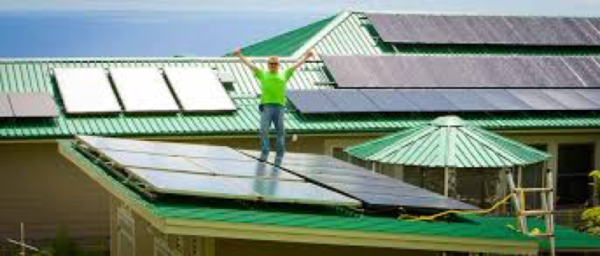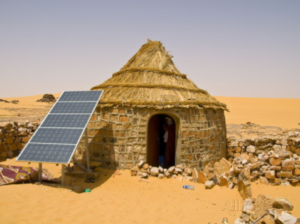All we know is that we don´t know. At the enterprise level strategies and business models need to take this even more into account. How will it affect the market you are in? New competition? Opening up new market possibilities? How will investments be affected?
Finally, a reflection is what will happen with the oil price. If the speed of innovations in solar energy continues – perhaps the demand for oil for energy production will decline even more and oil prices will stabilize at the current historically “low” level. How will the oil industry respond to that disruption?
Further reading -some examples of solar innovations:
Storing solar energy
Researchers have developed a relatively inexpensive and simple way to split water into hydrogen and oxygen through a new electrodeposition method. The method produces highly efficient solar cells that can gather solar energy for use as fuel.
Spray solar cells
Researchers have invented a way to spray solar cells onto flexible surfaces using tiny light-sensitive materials. These can be sprayed or printed on an ultra-thin film that could be applied like cling wrap to any surface.
Solar windows
Made with window coatings capable of generating electricity on glass and flexible plastics – are becoming possible as well.
Solar highways
A US company has completed testing for a solar encased roadway that would generate energy, eliminate power poles and help reduce our dependence on fossil fuels.
Floating solar arrays over recycled wastewater – currently under development in Sonoma County, California.
Strides in solar efficiency
Most solar generators can convert up to 23 percent of sunlight into electricity. However, Swedish company Ripasso Energy claims they can covert 34 percent of the sun’s energy into power with their contraption, making it the world’s most efficient solar electricity system.
Solar covered canals
This on-going project in India produces energy and helps save water. Visionaries are trying to bring this into California.
Solar covered trees
Tower over a Singapore waterfront amusement park. And a prototype harvests solar energy from its surroundings – indoors or outdoors – stores it, and turns it into electricity to power small digital devices.
Shared Solar
For people who don’t have the funds or the right roof for photovoltaic panels, peer-to-peer solar startup Yeloha is offering a genius solution: solar sharing. The company allows customers to “go solar” without owning a single panel by essentially feeding off their neighbors who do (and at a price that’s less than what they’d normally pay to their utility).
Solar transportation
In the air and on the road, solar technology is going the distance. Currently, the Solar Impulse 2, the first solar airplane able to sustain flight at night with a pilot on board, is making its historic round-the-world trip powered only by the sun.
Over in the Netherlands, SolaRoad, the world’s first “solar road,” has defied expectations and has generated about 3,000 kWh of power, enough to provide a single-person household with electricity for a year. Considering it’s only a 230-feet bike path, the potential for this technology could be big, kind of like photovoltaic technology itself.






